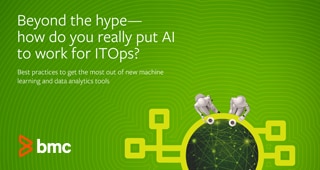
We often hear from customers that when a business application that employees frequently use has been upgraded, the calls to IT support increase and they often echo the same themes:
“…Something is not right!”
“I can’t access the solution!”
“This thing is so slow…”
“The thing I used to use is no longer there. Where did it go?”
Employee end-users are frustrated, so they are venting. They are used to IT “just working” in their personal lives – think Facebook, Amazon, Twitter – and they want the same smooth experience in their work applications. However, too often they list “failed” upgrades and slow responses as gaps between what they want and what the IT organization is delivering. When this happens, the IT support organization is seen as the “tortoise” in the race with the “hare.” By reviewing this scenario from “inside and outside the shell,” there’s a solution for helping IT organizations to catch up to, if not eventually keep pace with, the “hare.”
A View inside the Shell
For months, the application upgrade project team has done everything to the letter of the project plan utilizing every best practice: they’ve completed the system testing; the integrations have been validated; and they’ve logged in from a number of locations using a variety of logins and confirmed that the system is up and running. With all activities showing positive results, the IT application upgrade project team believes they are ready to hand over to IT Operations and move onto the next project.
The IT Operations team has been involved with the project as well. But they’ve also had to sustain their day-to-day tasks which include: all their system checks; log checks; integration checks; SLAs to keep green; targets to meet; and, even further keeping the “hares” delighted with all company business applications. Between all of this, they’ve had to find the time to learn the ins and outs of the new solution—the nuances between the new, “improved” workflows and processes and the old ways of working.The “tortoises” are so dedicated to having things run smoothly, they fit all of this in even when it meant they had to schedule one session at 6 am to stay on deadline.
So, inside the IT shell, the “tortoise” believes it’s going above and beyond to ensure that the upgrade as well as all important applications and systems are running perfectly. As they go to push the new solution live, they are confident the “hare” will be impressed. But, often IT hasn’t looked outside the shell. What’s going on there can unlock a key for catching up to the “hare.”
Getting Out of the Shell
So, what are things like for the “hare” outside of the IT “shell?” Well, the “hares” are running after their business goals with laser focus on the finish line. They don’t often think, “Hey, there’s a potential hurdle ahead I may have to jump because IT is upgrading a core application to my job.” They may recall an e-mail or a town hall that debuted exciting new features that were coming, but now that they are here they find that it is not clear to them how to use the updated solution. Since they don’t know how to navigate it, they need help and so the calls start coming in fast and furiously! And, they think “IT just don’t get me.”
As focus shifts to the user experience and solutions increasingly move to the cloud, the IT support organization needs to move out of its “shell” and into being more actively involved with supporting the transformation that is taking place. This transformation is only gaining pace, driven by the “hares” who are demanding the same smooth, intuitive IT experience at work as they have at home and in their social lives. This means that the focus of IT organizations needs to change. Yes, the IT support organization still needs to keep the IT “lights on,” but now increasingly also needs to put greater time and focus on how to keep the “hare”—the business and its users—satisfied, or better yet – delighted.
And, as you can see from the description of what’s going on “inside the shell,” IT needs the space and the bandwidth to do that. So, what help do they need to enable them to get out of their shell? Let’s go back to the opening upgrade scenario to find the answer because there are many things the “tortoise” is doing that the “hares” don’t see that are critical to successful business application delivery and impact how the “hares” do their daily work.
The Tortoise Catches the Hare
To achieve this new, expanded business mission successfully, IT support organizations need to re-organize, to become much more flexible and responsive. They need to focus on being able to manage the changes in a much more collaborative and engaged manner. They need to be seen as an extension of the business. They need to move away from the pure operations space and leave that to the solution and product experts. They need to be in the business of IT management and refocus to become suppliers of services back to their businesses. They need to manage the IT solution vendors and the IT services that they provide. In other words, the pure IT operations function for every solution needs to become just another service to the enterprise. That’s the way they can catch up to the “hares” and deliver service excellence, fulfilling the user needs.
These changes are compelling and make sense, but how can they be accomplished without significant financial cost or having to substantially expand the size of the IT organization? An application managed service handles application operations, application administration requests, incident and problem management, and operational reporting to optimize the reliability and health of your solutions and reduce total cost of ownership (TCO). These services are based on ITIL best practices. They become part of the support eco-system, an extension to the service desk, and by applying experience from other customers and other solution implementations, they enable proactive problem management and improve performance.
By adopting this service for your critical applications, your IT organization will be ensured a high level of solution availability because the correct configuration, workflows and user interfaces will be completely packaged and delivered as a complete system. As an added benefit, expensive resources will be freed up to focus on innovation and strategic products, thereby maximizing operational efficiency. Moreover, the application managed service can scale as business requirements shift.
The “hare” is driving the demand for IT solutions—they need access; they want an intuitive experience; and they want it now. With an application managed service, the solutions will be available when they need them, have the capacity to meet changing requirements and have the right capabilities configured in the way that users want. In short, an application managed service helps the IT support organization begin to catch up to the “hare.”
Please visit our Applications Managed Service page to learn how BMC can help your IT organization.
Get practical guidance for AIOps
These postings are my own and do not necessarily represent BMC's position, strategies, or opinion.
See an error or have a suggestion? Please let us know by emailing blogs@bmc.com.






